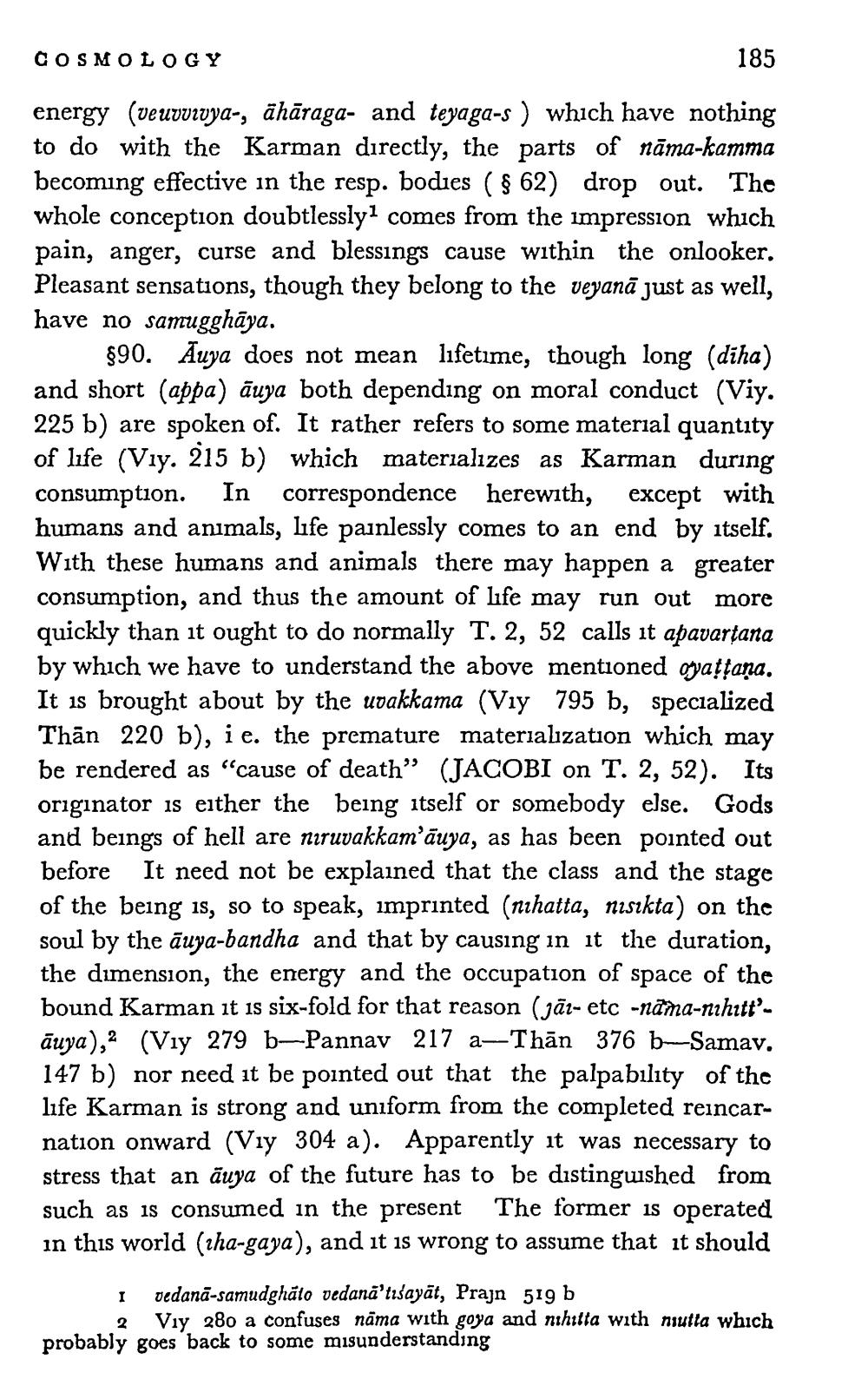________________
COSMOLOGY
185
energy (veuvvwvya-, āhāraga- and teyaga-s) which have nothing to do with the Karman directly, the parts of nāma-kamma becoming effective in the resp. bodies (§ 62) drop out. The whole conception doubtlessly1 comes from the impression which pain, anger, curse and blessings cause within the onlooker. Pleasant sensations, though they belong to the veyana just as well, have no samugghāya.
more
$90. Auya does not mean lifetime, though long (diha) and short (appa) ãuya both depending on moral conduct (Viy. 225 b) are spoken of. It rather refers to some material quantity of life (Viy. 215 b) which materializes as Karman during consumption. In correspondence herewith, except with humans and animals, life painlessly comes to an end by itself. With these humans and animals there may happen a greater consumption, and thus the amount of life may run out quickly than it ought to do normally T. 2, 52 calls it apavartana by which we have to understand the above mentioned apaṭṭana. It is brought about by the uvakkama (V1y 795 b, specialized Than 220 b), i e. the premature materialization which may be rendered as "cause of death" (JACOBI on T. 2, 52). Its originator is either the being itself or somebody else. Gods and beings of hell are niruvakkam'āuya, as has been pointed out before It need not be explained that the class and the stage of the being is, so to speak, imprinted (nıhatta, nısıkta) on the soul by the auya-bandha and that by causing in it the duration, the dimension, the energy and the occupation of space of the bound Karman it is six-fold for that reason (jāt- etc -nama-nihitt’auya), 2 (Viy 279 b-Pannav 217 a-Than 376 b-Samav. 147 b) nor need it be pointed out that the palpability of the life Karman is strong and uniform from the completed reincarnation onward (Viy 304 a). Apparently it was necessary to stress that an auya of the future has to be distinguished from such as is consumed in the present The former is operated in this world (tha-gaya), and it is wrong to assume that it should
I 2
vedanā-samudghato vedana'tisayāt, Prajn 519 b
V1y 280 a confuses nama with goya and nihitta with nutta which probably goes back to some misunderstanding




